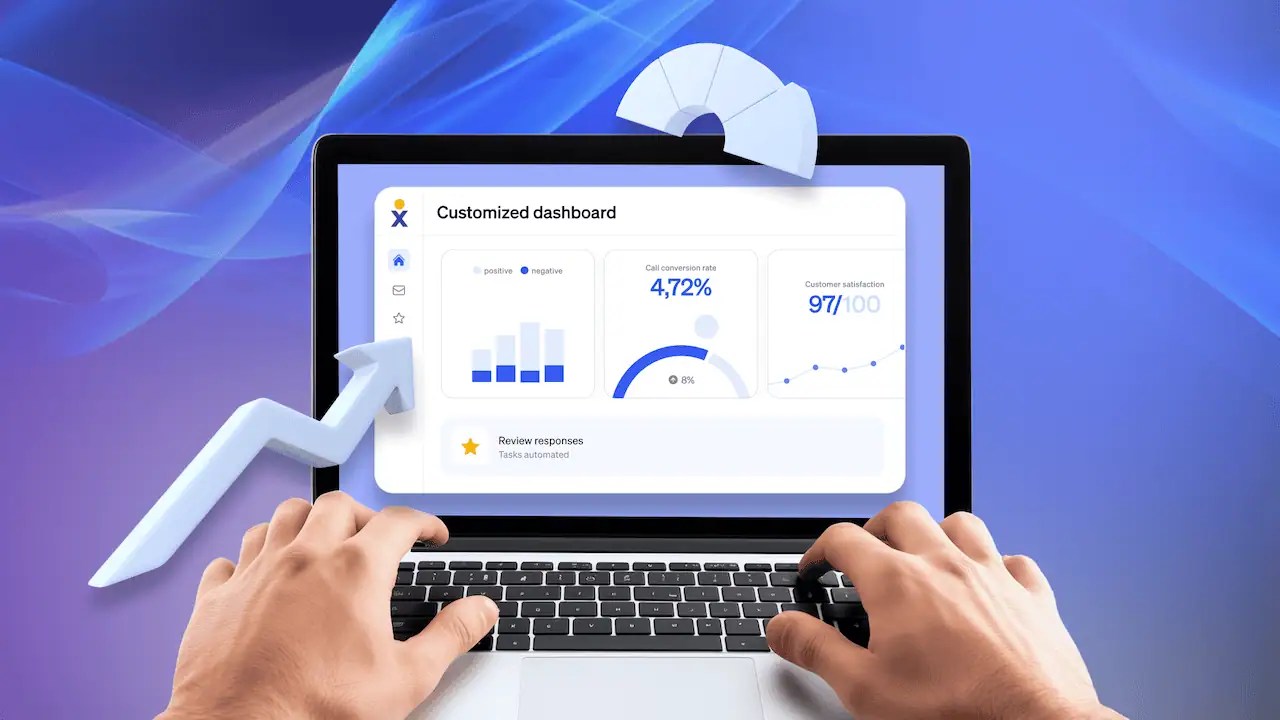Are you experiencing ongoing contact center problems? Contact centers have evolved dramatically in recent years with the emergence of artificial intelligence (AI), increased consumer brands, heightened remote work, and diminished brand trust. These factors all impact contact center leaders and how they choose to operate their businesses.
In this post, we’ll discuss the 15 most significant and common problems that can negatively impact call center organizations, allowing you to address the concerns before they start impacting your bottom line.
1. Talent Retention and Agent Burnout
High agent turnover rates due to stress, low engagement, and limited career growth opportunities can cause significant issues with talent retention. An SQM study found that 63% of call center agents reported high levels of burnout, contributing to high agent attrition rates:

Agent burnout and retention issues can cause the following issues:
- Reduced customer satisfaction scores (CSATs): Burned-out agents are often less likely to perform well at work, potentially resulting in poorer customer experiences.
- High turnover costs: Average turnover costs may be 1.5–2 times that employee’s annual salary, especially once factoring in the costs of recruiting, hiring, and training programs.
- Decreased productivity: New employees can take up to a full year to reach their full productivity potential, and burned-out agents often struggle with consistent output. This may mean longer waiting times, increased staffing costs, and frustrated customers.
- Increased absenteeism: Employee burnout is directly associated with higher levels of absenteeism, which can complicate scheduling and result in understaffed contact centers.
The solution
Talent retention is harder due to agent burnout, one of the most significant call center challenges. These solutions can help:
- Implement AI-driven workforce management tools to optimize agent schedules and reduce workload.
- Use gamification strategies to enhance motivation and engagement.
- Create clear career paths with continuous training and upskilling programs.
- Promote mental health initiatives and build a supportive work culture with regular check-ins.

2. Managing Hybrid and Remote Workforces
Contact centers are increasingly leveraging hybrid and remote workforces. Our data found that 24% of businesses were fully remote, and only 10% of contact center operators were run exclusively in person.

Some contact centers struggle with challenges specific to remote workforces, including the following:
- Ensuring agent productivity without direct, in-person management supervision
- Facilitating team collaboration, potentially across different time zones
- Maintaining both standard security practices and those that account for the additional risk that comes with remote work
The solution
To more effectively manage remote workforces, call center managers should do the following:
- Use cloud-based contact center software for seamless operations from any location.
- Adopt performance monitoring tools, including real-time dashboards, to quickly track agent activity and address potential concerns.
- Provide virtual collaboration tools for team meetings, task assignments, and knowledge sharing.
- Strengthen cybersecurity policies with multi-factor authentication, data encryption, access management, and VPNs to protect customer data.

3. Increased Customer Expectations for Faster Resolution
Customers frequently expect near-instant responses and personalized support across multiple channels, and this standard is not easy to maintain.
Almost two-thirds of buyers expect a response to any sales, customer service, or marketing inquiry within 10 minutes. Some expect instant responses on social media and live chat platforms, ideally within five minutes. Similarly, 71% of customers expect brands to personalize their interactions, and 76% will be frustrated if the business fails to deliver.
The solution
To better meet increasing customer expectations, implement the following best practices:
- Integrate AI-powered chatbots and virtual assistants to handle routine inquiries, free agents to handle more complex customer interactions, and reduce your average handle time.
- Use omnichannel platforms that unify customer data across voice, email, chat, and social media for faster resolutions.
- Implement real-time analytics to monitor service levels and key performance metrics, adjusting staffing dynamically to meet demand.

4. Difficulty in Scaling AI and Automation Effectively
AI technology can offer exceptional advantages for contact centers, with potential functionality like dynamic call scripting and suggestions, intelligent chatbots, and AI-powered insights. Many call centers, however, struggle to scale both AI and automation effectively for the following reasons:
- Concerns around data quality and accuracy, depend on how the technology is used.
- Privacy challenges, as some AI tools may “consume” the data you enter to become part of its overall database, potentially putting customer or proprietary information at risk.
- Lack of skills, as AI is a new technology that requires agent training, strategic use, and proper implementation.
The solution
To more effectively implement AI and automation, do the following:
- Develop an AI governance strategy to monitor AI performance and prevent bias or incorrect responses.
- Start small with pilot AI projects to identify success factors before expanding automation across the organization.
- Offer regular training to agents and supervisors on how to work with AI tools, ensuring that they’re up to date on company policies and potential challenges around AI usage.

5. Fragmented Customer Data and Poor Data Hygiene
Inconsistent or incomplete customer data leads to poor customer experiences and inaccurate reporting. This is a problem, as we already know that most customers expect strong, personalized experiences from brands of all sizes.
Multiple issues contribute to data quality control issues, including the following:
- Data silos spread across multiple platforms and communication channels that aren’t fully integrated
- Reliance on analytics from a single, disjointed platform
- Incomplete or inconsistent collection of customer data throughout their life cycle
- Failure to ensure that all relevant and accurate customer data is up to date
Keep in mind that data decays at a rate of approximately 30% each year. Proper data hygiene measures are essential.
The solution
To mitigate data hygiene issues and better support a 360-degree customer view, do the following:
- Use data cleansing tools to automate data validation and eliminate duplicate records.
- Establish data hygiene policies with regular audits and assign a data steward to maintain accuracy.
- Implement CRM integrations to unify customer data across all systems.

6. Escalating Operating Costs
As your contact center scales, you may experience escalating operational costs from the following:
- Increased staffing needs, including hiring agents with specialized skills to offer services like troubleshooting or lead generation
- Technology upgrades for software, phone systems, and hardware
- Higher customer expectations that require more intensive (and costly) solutions
- Inevitable economic factors like inflation or higher tax rates
The solution
To reduce and maintain operating costs, implement these strategies:
- Leverage self-service options like interactive voice response (IVR), knowledge bases, and AI chatbots to handle simpler interactions.
- Use predictive analytics for better demand forecasting to optimize agent staffing levels.
- Shift from CAPEX (physical assets) to cloud-based contact centers (CCaaS), which can reduce infrastructure and maintenance costs.

7. Security and Compliance Challenges
Security and compliance are often challenging, especially as remote work increases. As your operation scales and hires more people, there is an increased risk of data breaches, especially if you’re hiring remote team members.
A 2023 study found that 43% of remote employees use personal devices instead of company-issued equipment, 45% use the same passwords for work and personal accounts, and 32% use unapproved apps. These issues can all pose significant security threats.
It’s also essential to consider evolving compliance regulations, which may include GDPR, CCPA, and PCI standards. There may also be industry-specific requirements, depending on the type of work you do.
The solution
Reduce potential problems by doing the following:
- Deploy end-to-end encryption and role-based access controls to protect sensitive information.
- Use compliance management platforms to stay up to date with changing regulations.
- Require regular compliance training to ensure agents handle data appropriately, and consider implementing strict consequences for those found to ignore security protocols.
8. Difficulty in Managing Customer Journeys Across Channels
Effectively tracking your customer journeys across different channels can help you optimize the customer experience at all touchpoints and better understand customer buying cycles.
Unfortunately, disconnected systems make it difficult — if not impossible — to track and manage customer journeys effectively. This can cause communication breakdowns, a lack of essential touchpoints, and a failure to personalize customer support interactions with the right solutions.
Remember that companies that effectively leverage the most customer data experience 36% faster customer support resolutions and a 79% reduction in wait times.
The solution
The following solutions can help you better manage customer journeys across diverse channels seamlessly:
- Implement omnichannel call center solutions platforms that provide a single view of the customer across all touchpoints.
- Use journey analytics tools to identify pain points and improve the customer experience.
- Develop customer journey maps to plan for and manage multichannel interactions proactively.

9. Inconsistent Agent Performance and Service Quality
As your call center scales, it’s common to struggle with variations in agent performance. Unfortunately, this can directly impact the quality and consistency of the service you offer — and this matters.
One study found that 50% of customers will stop doing business with you after a single bad customer support experience, and 80% of customers will churn after two bad experiences. Having a single low-performing agent can result in notable client churn for a business, causing a significant loss of revenue.
The solution
Boost consistency in agent performance and service quality with these strategies:
- Use quality management tools to monitor and score interactions for continuous feedback.
- Provide personalized coaching based on data from call recordings, real-time monitoring, and AI-driven insights.
- Implement gamification strategies to create friendly competition among team members, leverage incentives, and encourage consistent high performance.

10. Handling Increased Call Volume Due to Market Changes or Crises
Experienced call center managers know that call volume rarely stays stable or steady over time. Sudden market changes or emergent crises can increase incoming calls, sometimes dramatically.
Sudden spikes in customer inquiries can overwhelm staff, boost customer wait times, and degrade overall service quality, especially if your call center isn’t prepared to handle staffing requirements dynamically as demand changes.
The solution
To handle increased call volume regardless of market changes or crises, call center managers should do the following:
- Use chatbots and self-service options to handle routine inquiries during high-demand periods and act as a first line of defense.
- Implement cloud-based contact center solutions to scale up agent capacity on demand.
- Develop a contingency plan that includes overflow staffing options and predefined messaging for crises.

11. Customer Frustration With Long Wait Times and IVR Systems
It’s no secret that customers quickly grow frustrated with long hold times or confusing IVR menus. A study from Zendesk asked consumers what the most frustrating aspects of a bad customer support experience were, and 60% noted long wait times, while more than 40% cited automated systems that made it hard to reach customers.
While IVR systems can improve customer service experiences by leveraging smart routing, it’s essential to ensure that they perform as expected.
The solution
Minimize customer frustrations by reducing long wait times and revising complex IVR menus by doing the following:
- Offer callback options to reduce frustration and manage queue times effectively.
- Use AI-based IVR systems to predict intent and route customers more efficiently.
- Have clear and simple IVR systems that allow customers to easily reach live agents when needed.
- Optimize workforce management tools to align staffing with peak periods.

12. Lack of Real-Time Insights for Decision-Making
Contact center leaders need immediate access to insights that include the following:
- Customer sentiment and satisfaction data
- Agent performance metrics
- Workforce management data
- Agent engagement data
- Anticipated call volume
Without access to real-time insights, managers can find themselves making important decisions on outdated or inaccurate data, preventing them from adjusting operations correctly or proactively.
The solution
Call center managers can do the following to access real-time data for improved decision-making:
- Use real-time dashboards to monitor KPIs like service levels, call handle times, first call resolution rates, and agent performance.
- Implement alert systems that notify supervisors of potential issues before they escalate.
- Conduct regular data reviews to make proactive adjustments based on trends.

13. Struggles With Workforce Planning and Forecasting
Many call centers struggle to create accurate forecasts, which are critical for workforce planning, especially once unexpected call volume changes happen. Inaccurate forecasts, however, can have significant ramifications for your operational efficiency. They can result in understaffing or overstaffing, both of which can negatively affect costs and service levels.
The solution
Call center managers can better plan and forecast workforce needs by doing the following:
- Using AI-powered forecasting tools to predict call volumes and staffing needs accurately
- Building flexible shift schedules with part-time or on-demand agents to handle fluctuations
- Conducting historical data analysis to refine forecasting models over time

14. Inadequate Training and Onboarding for Agents
Onboarding is essential to increase employee engagement and bring new team members up to speed on everything from customer support policies to your tech stack and how to use it. Both initial and ongoing training can help employees upskill, ensure policy compliance, and improve overall center performance.
It’s also important to note that poor onboarding experiences and a lack of training can result in not only inconsistent performance but also increased agent turnover.
The solution
To offer thorough onboarding and continued training that will support agent confidence and productivity, do the following:
- Implement structured onboarding programs with clear timelines and measurable goals.
- Use microlearning tools to provide ongoing, bite-sized training sessions.
- Integrate training with live systems, such as shadowing experienced agents for hands-on experience.
- Provide ongoing training to promote consistent quality, familiarity with changing policies, and comfort with new technology.
15. Adapting to New Customer Service Trends and Technologies
Many leaders struggle to keep up with emerging technologies and evolving customer expectations. This is normal. Once you get up and running, the last thing you want to do is shake everything up, and changes can happen fast.
Unfortunately, if you’re not staying up to date, your contact center will likely fall behind. New technology like AI can automate workflows to increase agent productivity, for example, keeping potential call center costs low. Similarly, you may feel confident in your two-minute average wait time, only to find that your customers now expect a response within a minute and a half.
It’s critical to know what’s happening in the industry so you can adapt proactively and benefit accordingly.

The solution
Call center managers need to stay up to date with evolving customer service tech and trends. The following tactics can help you do so:
- Stay updated with industry trends through webinars, conferences, and professional networks.
- Develop a technology road map to guide future investments.
- Pilot new technologies, such as generative AI tools, to stay ahead of the curve.
Face Your Problems Head on With Nextiva
All call center operations will experience challenges at some point, but it’s essential to be proactive when potential issues emerge. In many cases, contact centers can benefit from putting mitigating measures in place before the problems actually start causing issues.
Arming yourself with the right tools is a crucial first step. The right contact center software can help address most of these challenges. A robust CCaaS platform will allow call center managers to better optimize operational efficiency, improve the agent experience, and meet customer expectations.
Nextiva’s enterprise contact center software, for example, offers the following features:
- Cloud-based tools that support a remote work environment
- Detailed analytics to track contact center agent performance and critical CSAT metrics
- Workforce engagement management functionality to optimize staffing and employee morale
- Streamlined call flows with call routing and IVR to reduce customer wait times and frustrations
- Quality assurance measures through diverse analytic and customer feedback options
- Customer experience management tools across all digital channels
- Automation tools to streamline repetitive tasks and workflows, boosting agent productivity
Ready to tackle major contact center challenges like high turnover rates, reduced productivity, and lack of data? Learn more about Nextiva’s contact center solution today. 👇
Top AI-Powered Contact Center Solution
Transform your customer interactions with a contact center platform that saves you time and money, reduces agent and supervisor stress, and flexibly adapts to fit your needs.

















 Customer Experience
Customer Experience 









